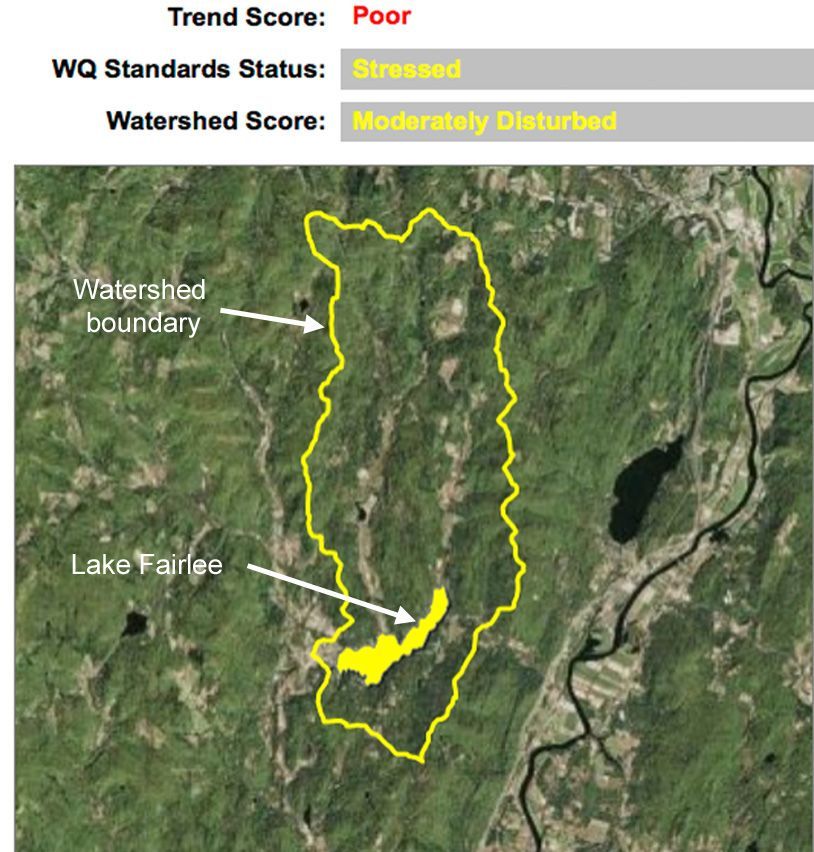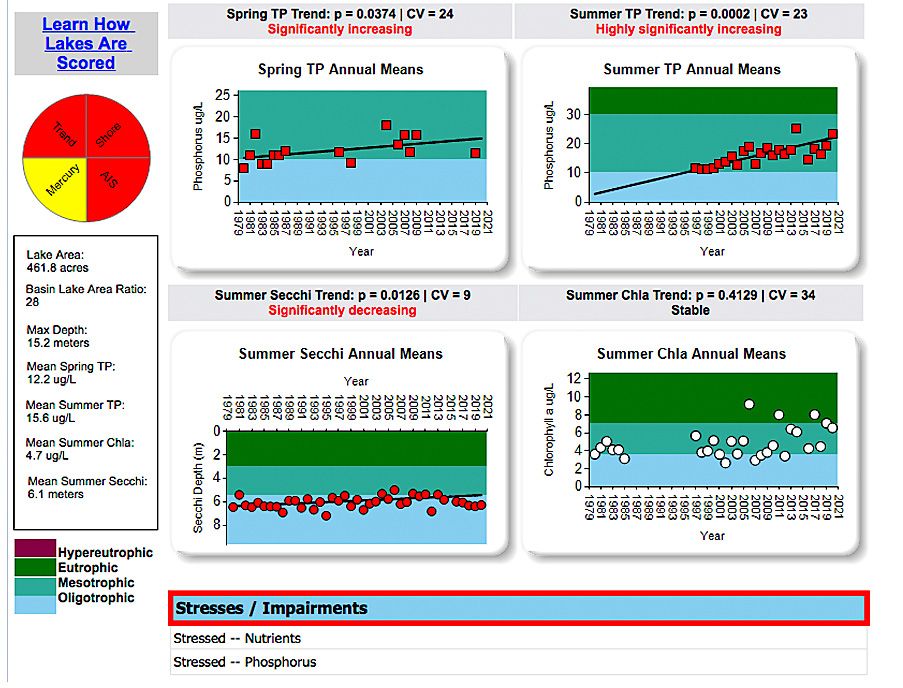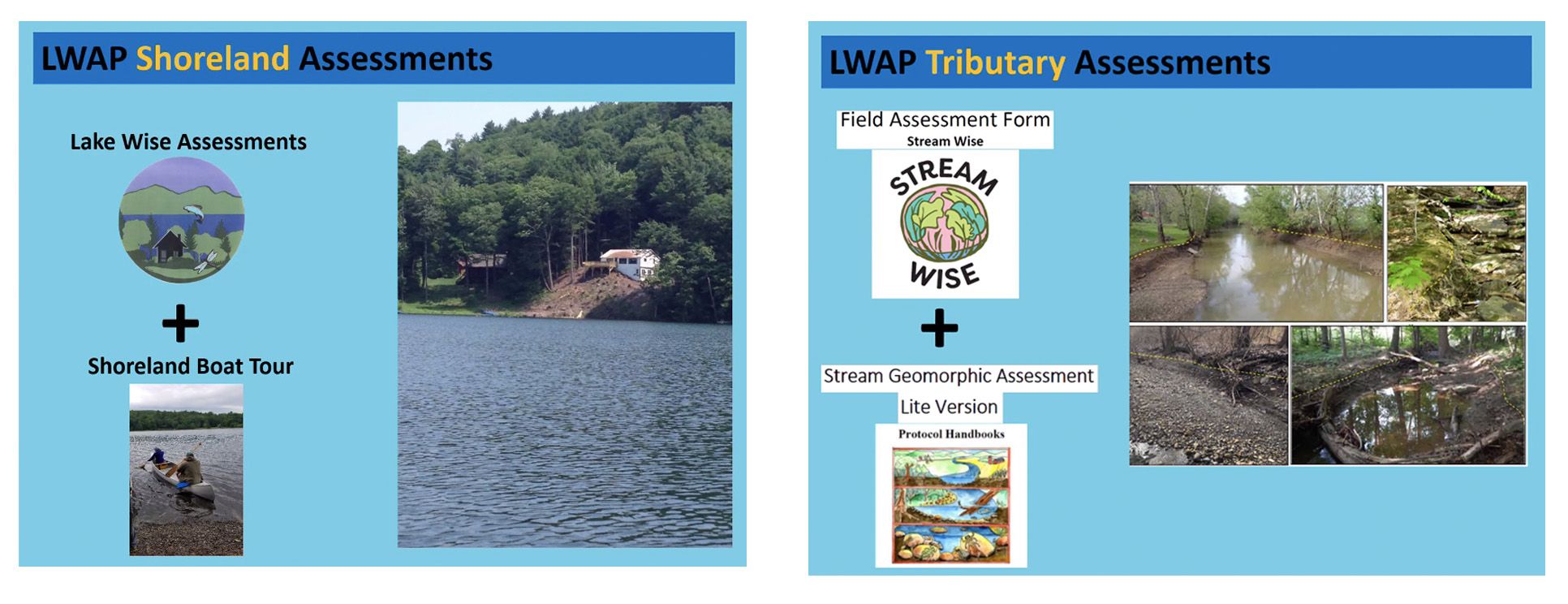An action plan for Lake Fairlee’s faltering health
We'll be expecting the final report around May 2023.

In the early 1970s, a startling experiment sent ripples through the lake ecology community. Canadian scientists had selected a few lakes that had a narrows in the middle and set up barriers that divided the waters into two. Both halves received nitrogen and carbon fertilizer, but only one half received phosphate. Despite the fertilizer, the waters without phosphate remained clear, whereas the side with phosphate became a green mess of abundantly growing algae. The experiment dramatically highlighted the pivotal role of phosphate in poor water quality. Since then the Vermont Lakes and Ponds Management Program has been monitoring levels of phosphate in lakes throughout the state.
And in the last 40 years they have observed a worrisome trend. Lakes that were formerly low in phosphate now have double the amount of that nutrient. We’re not talking about Lake Champlain. Sadly, the pollution in that waterbody is amply documented. What concerns scientists is the rising phosphate in coldwater lakes everywhere across the rest of the state.
Vermont lakes are divided into three broad classes for study purposes. Pristine lakes, exemplified by deep lakes at some elevation, are Oligotrophic and are characterized by water that is cool and clear due to very little algae. These conditions favor coldwater fish such as trout. Today, even these lakes are showing a rise in phosphate levels. Mesotrophic lakes support more algae and weeds due to higher levels of nutrients. Algae use sunlight for photosynthesis, but their absorption of the sun's heat energy contributes to water warming according to the EPA. Mesotrophic lakes typically contain warmwater fish like pickerel and small mouth bass. The third division is Eutrophic lakes that are heavily populated with algae and other plants. These waters become low in oxygen because algae die and then decay en masse, consuming oxygen in the process. Consequently such waters favor hardy fish like largemouth bass and sunfish.
The VT Agency of Natural Resources is keeping tabs on all the lakes in the state through its Lake Scorecard program in which the results of scientific measurements of lake water quality and degree of shoreline degradation are summarized. Lake Fairlee’s scorecard shows it has slipped since the 1980s from borderline to firmly Mesotrophic and may be edging into Eutrophic according to the Summer Chla (chlorophyll a) data that indicate the amount of algae.

This prompted the Lake Fairlee Association to set up a Water Quality Action Committee. Now the help of other organizations is being recruited. On November 18th the various parties were convened by Lisa Niccolai of the WRNRCD (White River Natural Resources Conservation District) to discuss making a Lake Watershed Action Plan. The plan would prioritize the list of threats that must be addressed in order to stall the decline of the lake.
Amy Picotte, DEC Lakeshore Manager and coordinator of the LakeWise program, described how the Action Plan would be based on investigation and data collection to identify the chief threats to lake health, water quality, and lake ecosystems. Shorelines that are developed and disturbed are often the biggest contributors of phosphate. Second are tributaries where there is development and farming, and third are roads. Amy will be working with Treasure Island, which controls one of the longest pieces of shorefront. The larger camps and a few private landowners have also expressed willingness to participate.
Regarding shorelines, it is worth noting that Maine lakes that closely resemble our oligotrophic VT lakes have not experienced any rise in phosphate levels. Maine adopted a strict shoreline protection law in 1971 that mandates a 100-foot setback for lakeside construction along with waterside buffers of natural vegetation, not lawns, to control and absorb runoff. In Vermont, Lake Seymour in Morgan is the only one so far to successfully reverse its rising phosphate levels. This was achieved by its Lake Association encouraging cooperation among multiple stakeholders. Many landowners enrolled in the LakeWise program and subsequently won Gold Awards for replacing lawns with no-mow zones, plantings, and landscaping that absorb runoff, sediment, and phosphate. In 2020 the work of the Lake Seymour Association was recognized with the EPA Environmental Merit Award.
Pollution coming into Lake Fairlee from its tributaries Blood Brook and Middle Brook would be addressed through the StreamWise program. Rather like LakeWise, it encourages land management along stream banks that restores buffers of natural vegetation that protect the water by filtering runoff. Keeping livestock from trampling banks and depositing wastes next to water is critical. The current condition of tributary stream banks and the urgency of remediation will be assessed by Bear Creek Environmental, a consulting firm specializing in river geomorphology and environmental restoration.

Municipal roads by the lake should be managed according to the VT Municipal Roads General Permit that sets guidelines for controlling stormwater runoff from roads that are within 100 ft of a water body. In particular the MRGP Guidelines state: “Road crews should not be cutting down trees, shrubs and mixed vegetation within 250ft of a lakeshore, which does not include mowing grass or clearing noxious weeds (invasive plants). This vegetation is protected under the Vermont Shoreland Protection Act and serves as best management to stabilize the bank and protect the integrity of the road…. …this vegetation serves as an important buffer, offering bank stability and filtration, protecting both lake and road, and should NOT be cut!” However the MRGP does not apply to private roads or driveways.
The Action Plan project is off to a good start, with $30,000 in funding through the Clean Water Initiative Program. And besides Amy Picotte and Lisa Niccolai, there are a host of willing helpers, including Jennifer Byrne at WRNRCD; Mark Mitchell at the VT DEC; Dale Gephart, Doug Tifft, and Katherine Babbott and Tom Ward of the Lake Fairlee Association and its Water Quality Action Group; Libby Chapin, a longtime champion of the lake; Delsie Hoyt, Chair of the West Fairlee Selectboard; State Watershed Planner Danielle Owczarski; the VT DEC River Engineer Tom Mennees; Pete Fellowes of TRORC; and landowners and other residents who are concerned about the lake.
Work on gathering data to inform the Action Plan will start this winter, with Bear Creek assembling records of all ongoing or past work in the lake Watershed. In 2011 they completed a detailed Geomorphic Assessment of rivers and streams in Thetford and adjacent towns, and these historic records will provide a comparison for the Lake Action Plan studies. In 2022 there will be a big push to enroll landowners in the LakeWise program. Road evaluations and geomorphic and other assessments will be completed and compiled. In the winter of 2022-23 all data will be shared and assessed. There will be brainstorming sessions on how to best get the information to the public to obtain important feedback. We'll be expecting the final report around May 2023.
